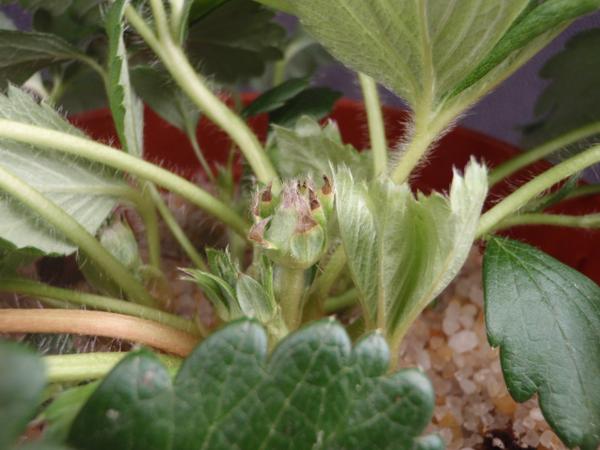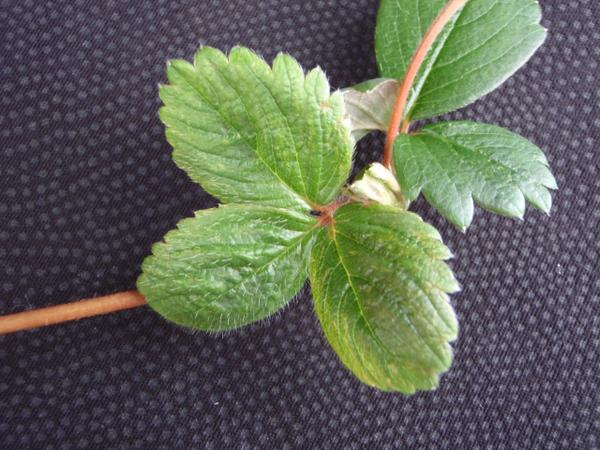Problem
Nutritional disorder – boron (B) deficiency
Symptoms
Upper leaves distorted and chlorotic. Younger leaves develop tip burn and as leaves expand they become cupped and distorted. Marginal leaf yellowing can also occur with more severe deficiencies.
Deficiencies can also affect the flowers and fruit. Flowers are smaller, petals deformed or fail to develop. Fruit fail to fully expand and are deformed and bumpy.
Similar Problems
Distorted leaf and fruit symptoms also occur with calcium deficiencies.
Additional Information
Good root systems and environmental conditions that encourage evapo-transpiration through the leaves will aid in the uptake of boron.
Diagnostic Tips
Distorted and thicker leaves are typical. Submit a leaf sample for nutrient analysis. The sufficiency range for boron in strawberries is 25 to 50 ppm. Values lower than 20 to 25 ppm can lead to deficient conditions.
Corrective Measures
Foliar sprays of solubor (20% B) with rates based on recommendations from a soil and plant testing lab. Avoid excessive applications of boron which can lead to toxicities.
Management
B can be leached, especially in sandy soils. Strawberries are a moderate feeder for B. Test soil for B level prior to planting and follow local crop production guidelines for boron application in your area. Typical recommendations, based on if the soil test values indicate less than 1 ppm B, is an application of 1 pound of actual boron per acre prior to planting. Over application of boron can lead to toxicities.
Useful Resources
Strawberry Tissue Analysis – North Carolina
Strawberry Fertiliser Guide – Australia
Strawberries (Western Oregon, west of Cascades) – Oregon
Fertilization of Strawberries in Florida – Florida
Funding Sources
Funding was provided in part by the National Sustainable Agriculture Program: Sustainable Strawberry Initiative and the following sources.
A thank you is also expressed to Kube Pak of Allentown, New Jersey for donating strawberry plants.
Publication date: April 10, 2014
N.C. Cooperative Extension prohibits discrimination and harassment regardless of age, color, disability, family and marital status, gender identity, national origin, political beliefs, race, religion, sex (including pregnancy), sexual orientation and veteran status.







